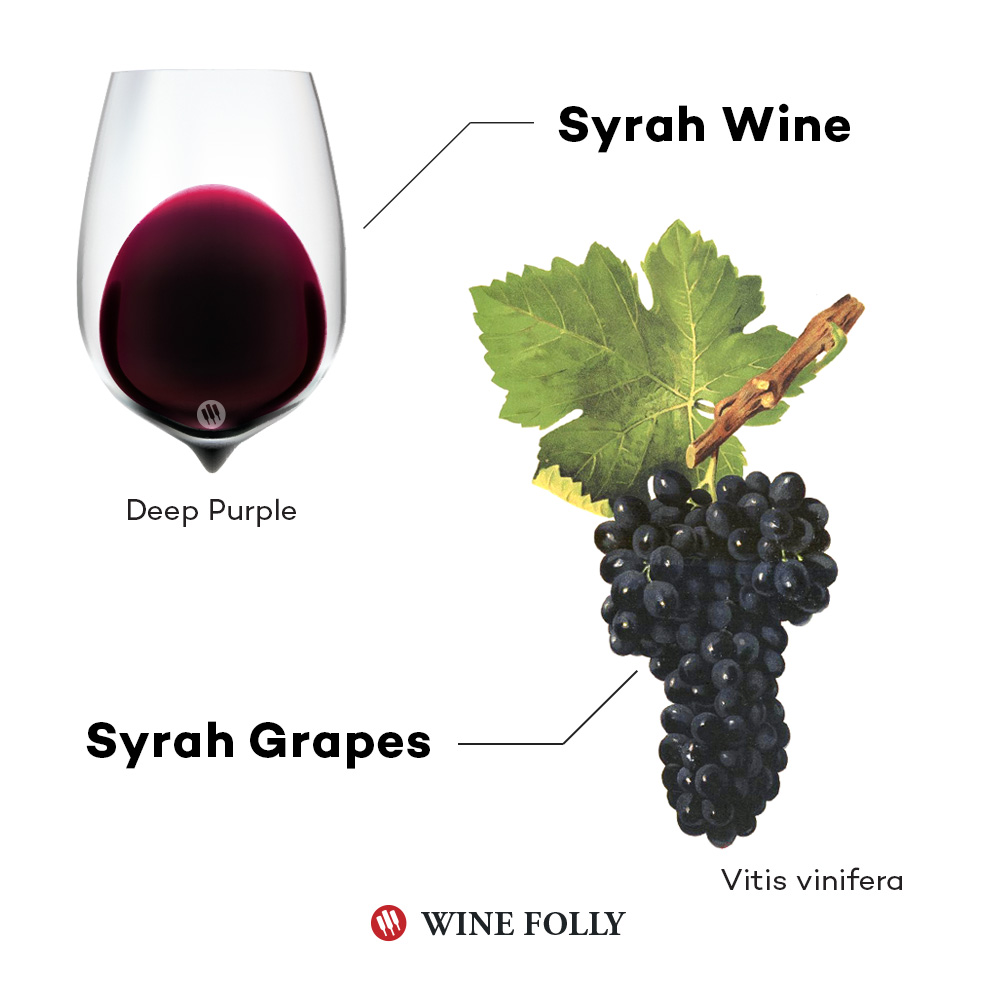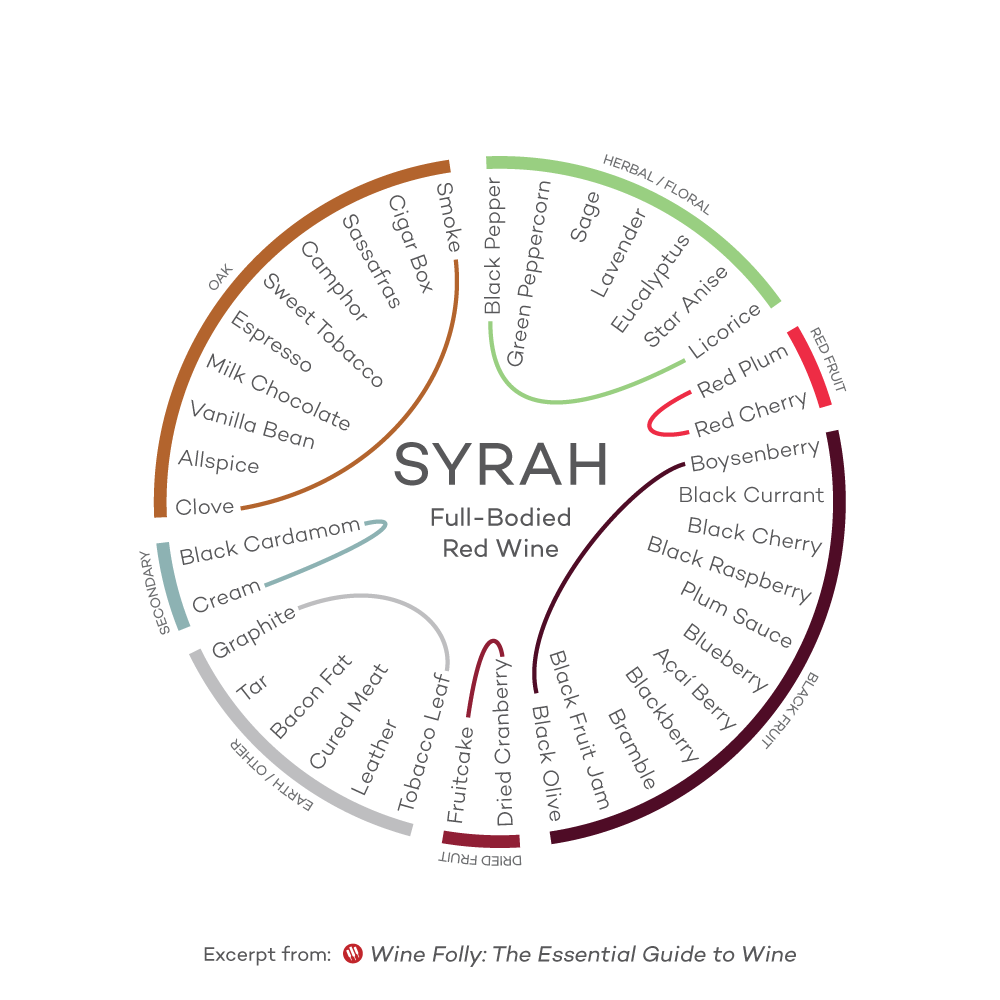A rich, powerful, and sometimes meaty red wine that originated in the Rhône Valley of France. Syrah is the most planted grape in Australia, where they call it Shiraz.
Primary Flavors
- Blueberry
- Black Plum
- Milk Chocolate
- Tobacco
- Green Peppercorn
Taste Profile
Handling
-
SERVE
60–68°F / 15-20°C
-
GLASS TYPE
Universal -
DECANT
1 Hour -
CELLAR
10+ Years
Food Pairing
Darker meats and exotic spices bring out the wine’s fruit notes. Try it with Lamb Shawarma, Gyros, Asian five-spice pork, or Indian tandoori meats.

Fun Facts About Syrah Wine
- While called Syrah in most of the world, the grape is typically known as Shiraz in Australia.
- DNA profiling confirmed that this grape originated along the Rhône in France.
- From the 1980s to the mid-2000s, Syrah increased in planted hectares from approximately 10,000 ha to over 450,000 ha.
- Syrah makes some of the darkest red wines in the world.

What To Look for in Syrah Wine
When you taste Syrah, you’ll be greeted with a punch of flavor that tapers off, followed by a spicy, peppery aftertaste.
Due to its front-loaded style, it’s often blended with grapes that add more mid-palate weight, such as Cabernet Sauvignon, to make the wine taste more complete.
Versions from Italy and France tend to have more acidity and earthy, herbaceous aromas. Versions from Australia, the U.S., and South America usually have more fruit-driven characteristics and lots of spice.

How Much Should You Expect to Spend?
You’ll find good value Syrah around $50, and great examples of the wine can range into the hundreds of dollars. The most important part is considering where the wine comes from and what characteristics you should expect.
